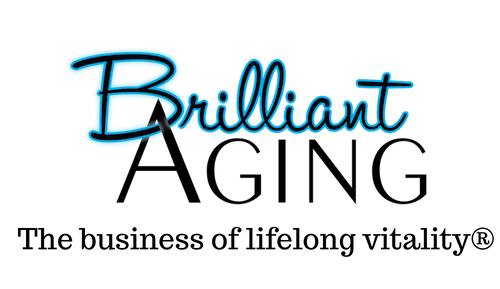How to Balance the 6 Dimensions of Wellness in Your Life After 60
How balanced is your Wellness Wheel? Are you missing a spoke?
Some time ago I introduced the concept of creating a personal Vitality Portfolio® just like you would a financial portfolio. This involves creating a vitality plan, balancing vitality assets (wellness, core and functional), and making regular deposits.
It’s important to ensure that each dimension of wellness carries its share of the load to support lifelong vitality. Let’s start by defining the 6 dimensions of wellness.
Physical – function, lifestyle habits, health management
Social – healthy relationships, connection with a community
Emotional – healthy expression of feelings, positive attitude, resilience
Intellectual – lifelong learning, supporting cognitive health
Spiritual – meaning and purpose, something greater than self
Vocational – Occupation, hobbies, purposeful activities.
Now think of each dimension as a spoke on a wheel and consider what a ‘perfect’ Wellness Wheel would look like. We live in real life though, so perfect is rarely an option! Drawing a personal Wellness Wheel offers a clear snapshot of which dimensions are carrying the load and which ones need to step up!
Drawing Your Wellness Wheel
First you need a sense of what deposits you’re currently making into each dimension. Consider using a worksheet – it can be as simple as writing Physical Wellness at the top of a page and then listing the things you’re currently doing to support physical well-being.
Repeat with each dimension, and you’ll quickly see that some worksheets have lots of items while others have almost nothing.
The dimensions are interrelated so you may include certain wellness deposits in multiple worksheets. There’s nothing perfect about it – the worksheets just help you decide which spokes are bigger, smaller or simply missing all together.
Starting with an empty wheel and a pencil, draw your Wellness Wheel.
Wheels Change
Your Wellness Wheel continually evolves and changes depending on what’s going on in your life. Three months ago, my physical and vocational spokes dominated as I was rehearsing three nights a week for a dance performance and on horseback almost every day.
Drawing my wheel today shows that my intellectual and vocational spokes are carrying most of the load as I work on launching a new product.
Unfortunately, since I’m spending so much time on the computer, my physical spoke is pretty small and pathetic – which is really embarrassing because I know how important it is! Still, just drawing my wheel inspired me to get back to dance class twice a week!
I’d also like to share that my emotional spoke is really big, too, because my first grandbaby just arrived, and I’m filled with gratitude, connection and love!
What About You?
What impacts your life balance? Does it change with the seasons or does something else directly impact the deposits you make into each wellness spoke?
Consider drawing your wheel several times a year just to see if there’s a spoke that consistently lags behind. Think about the possible reasons why it doesn’t receive much – or give much – and what you could do to build it up.
Real Life
Finally, wellness doesn’t represent the absence of challenges! Physical wellness isn’t about physical perfection, it’s about physical competence; the ability to maximize physical abilities regardless of challenges.
For example, Kevin Connolly was born with no legs, but as a young man, traveled the world by himself on a skateboard, and then wrote a book about it, titled, Double Take! You could say he has a low level of physical wellness because he’s missing legs, but he has a very high level of Physical Competence that allows him to do the most with what he has!
The same applies to emotional wellness. It’s not about being happy all the time. It’s about cultivating Emotional Agility – the ability to navigate life’s ups and downs.
Social wellness isn’t about being with people all the time. You can be lonelier in a room full of people than when you are alone. It’s about building true Social Connections that bring camaraderie and feelings of belonging.
Intellectual wellness isn’t about IQ or level of education. It’s about Intellectual Curiosity – the willingness to continue learning and growing through your full lifespan.
Spiritual wellness isn’t necessarily about being religious. It’s about acknowledging something greater than yourself – religion, nature or whatever supports your individual sense of Spiritual Connection.
And lastly, vocational wellness isn’t about a particular job or hobby. It’s about Engagement in something that feels meaningful and purposeful. It’s about recognizing abilities and giving, as well as receiving.
To support lifelong vitality, consciously build each spoke on your Wellness Wheel.
Visit www.kayvannorman.com to download the FREE Vitality Portfolio® Starter Tool-kit with definitions of the dimensions of wellness, Wellness Wheel templates and worksheets.
How well-balanced is your Wellness Wheel? What aspect of your life needs to be more in equilibrium? Please share your thoughts below.
Let's Have a Conversation!



